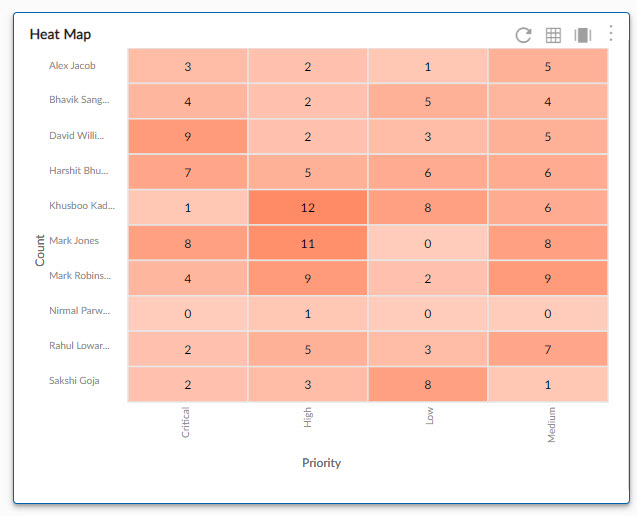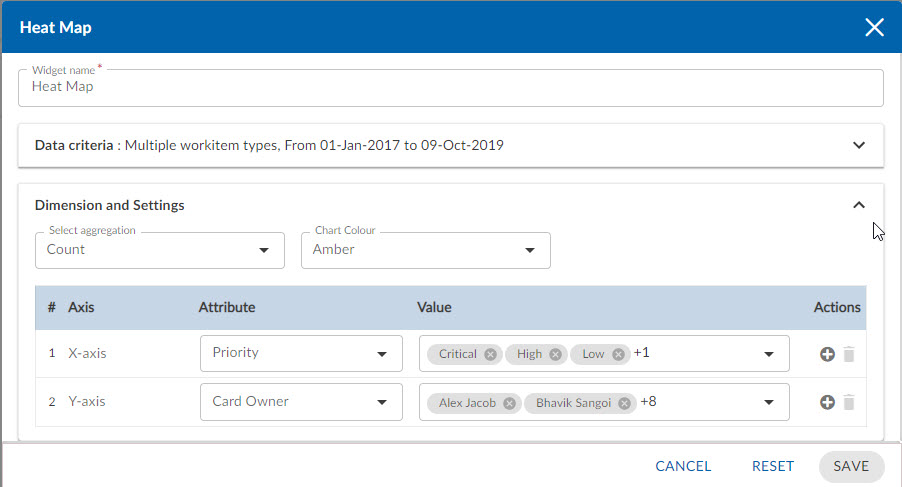Start with the video first to get a better grasp of the topic!
|
Skip Ahead to: |
Overview
Heatmap is a representation of the item count in which the data values are represented in multiple shades of color. The darkest shade of the color is the highest value while the lightest shade of the same color is the lowest value.
The Heatmap is available for the following analytics components – Pivot Table, Analytics Builder, Defect Status widget
Configuration
To plot a Heatmap, perform the following steps:
1. Open the Analytics page and click the Add Widget icon. The Analytics Builder appears.
2. Click the Heat Map chart. The Settings page appears.
3. Enter the given information in the Data Criteria and Dimension and Settings as per your requirements:
Data Criteria
- Modify the widget name, if required.
- Workitem type – Select the required workitem types for which you want to plot the chart. A message is displayed on the screen if the selected workitem type has no data in it.
Note: If you select the My Workitem option, the Release, Sprint, and Task Plan options won’t be selected as they are dependent on the form’s execution. - Select workitem status – Select the workitem status such as All, Open, Closed, etc. for the workitem types.
- Create filter – You can create custom List views for viewing specific workitem groups using the Advanced Filter option. Create a filter where you can set a combination of filter criteria and then apply them.
- Date range – Enter the date range for the period you want to plot the chart, by selecting the dates in the Start date and End date fields.
Dimension and Settings
- Select aggregation – You can plot the chart based on the numeric field of the selected workitem type such as count, sum, percentage etc.
- Chart Color – Select the color for your chart.
Select Axis on the chart
- X Axis – Select the attribute (and its values) which you want to be plotted on the X axis of the chart. The attribute field shows all the fields which are common in the selected workitem types.
- Y Axis – Select the attribute (and its values) which you want to be plotted on the Y axis of the chart.
4. Click SAVE. The Heat Map chart will be rendered as per the set metrics.


